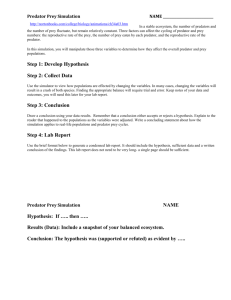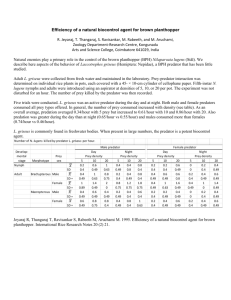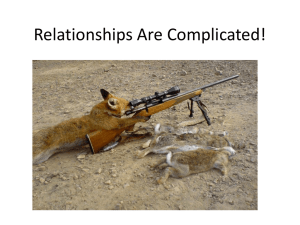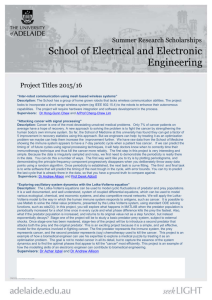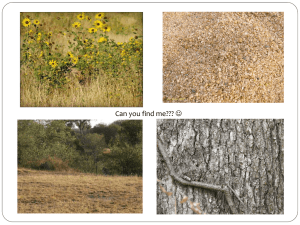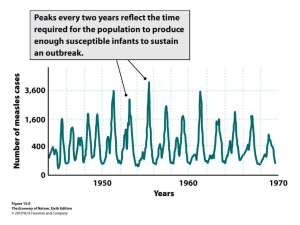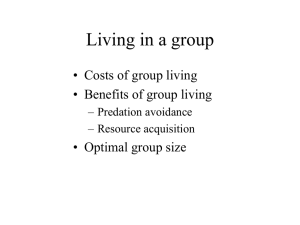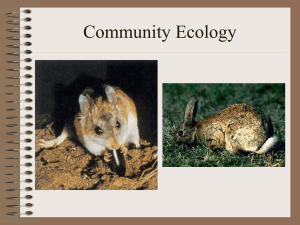Slides from Section 3/9/2015
advertisement
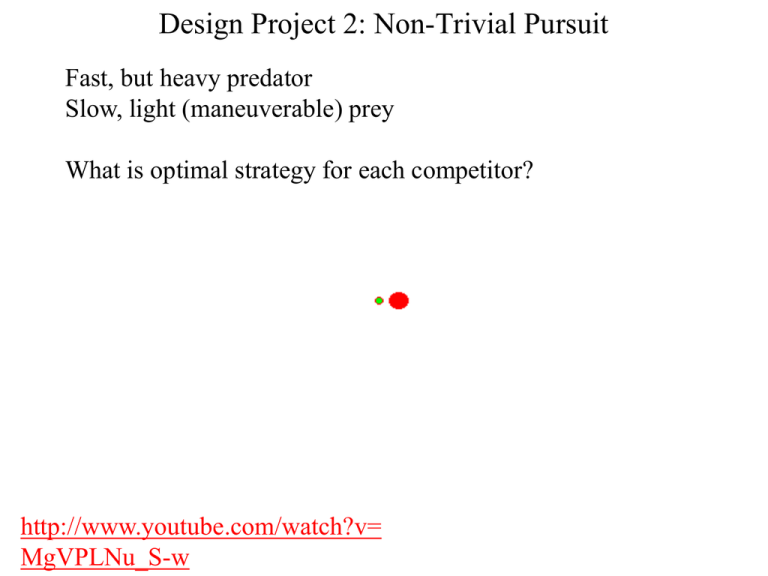
Design Project 2: Non-Trivial Pursuit Fast, but heavy predator Slow, light (maneuverable) prey What is optimal strategy for each competitor? http://www.youtube.com/watch?v= MgVPLNu_S-w Design Parameters: • Predator/Prey are both particles. • Predator/Prey propulsion system exerts a force with arbitrary direction, and magnitude within predetermined range. • Predator/prey experience viscous drag force, and a fluctuating random force. •Predator and prey start with a finite amount (10J) of energy. If the energy supply is exhausted the propulsive force drops to zero. Predator: m r 18 gram Mass: 3 F 15 10 N Max Force: r m ax Prey: m r 10 gram Mass: 3 Max Force: F y m ax 1 0 1 0 N Predator/Prey Control (complete and submit this script) Some possible strategies: Predator: • Apply force towards prey (see HW 3, 2012) • Use extra credit part of HW3, 2012 n ra r c ( v a v ) / ra r c ( v a v ) Prey: • Apply force directly away from predator • Move along wavy path with frequent direction changes • Move along circular path with small radius • Base force on velocity of predator in some way Competition Rules Each design team must play both predator and prey Teams will compete against one another (or against random competitor) Each contest lasts for 250 sec – if predator catches prey, predator wins. If prey escapes, prey wins. If neither team can catch opponent, winner is determined by shortest distance between predator/prey. Pursuit Project Organization Schedule: Project Test Date – Friday March 13th Project is done in groups of up to 4. Can be done individually. Deliverables: (i) MATLAB code containing function to compute forces (ii) Report (one per group). Due Monday March 16 Reports should be mostly written by March 13th – the extra time is so you can add a discussion of performance in the competition (iii) Oral presentation describing strategy and design procedure, (and intimidating the competition) (PRESENTATIONS SHOULD NOT EXCEED 8 MINS) Report writing Reports should be written as a formal technical document. For style guidelines read any of the papers included as background reading in earlier HW. • Organize report carefully • Make sure sections, paragraphs, sentences follow logical reader-friendly sequence • Avoid colloquial language • Avoid convoluted sentences • Define symbols in equations, use figures. • Figures, graphs and tables should be labeled properly and be publication quality Possible report outline Helpful reference – ‘how to write a paper’ Mike Ashby http://www-mech.eng.cam.ac.uk/mmd/ashby-paper-V6.pdf (google ‘how to write a paper’) 1. 2. 3. 4. Know what you want to say Tell a story – use a logical order Make everything as simple as possible Think of your readers – can anything you say be misinterpreted? Is all the information there? 5. Label graphs, don’t forget units, define symbols in equations Presentation Guidelines 1. Keep to 8 mins (no more than 5 ppt slides) (otherwise we run out of time to test your codes!) 2. For this project, there is no need to give background (eg purpose of project, constraints etc). Focus on what your group has done. 3. Points to address: (a) What is your strategy? (b) How did you choose it, and why? (c) Why are you going to win?

